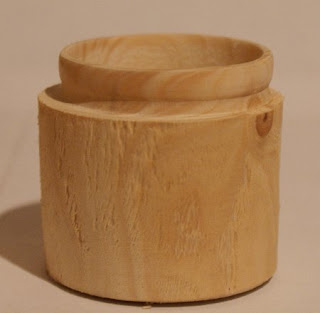Well despite the sunshine it's autumn (well more or less) so we can expect more cold weather and no doubt more rain, so here's an easy project for a rainy day.
These aren't by any means a new idea, but they are easy, cost very little (if you have stuff lying about like me) and they are also good as a teaching aid.
Here they are -
These aren't by any means a new idea, but they are easy, cost very little (if you have stuff lying about like me) and they are also good as a teaching aid.
Here they are -
 |
| The won't win any design awards, but they are fun. |
All these are made from scrap bits of wood, and they are all powered by rubber bands, they are basic I'll admit, but they can be messed about with, and it's more about what you can do with your imagination, and it shows how you can store energy.
All you need are some bits of wood, some rubber bands and a few tools.
The Tank -
 |
| See anything familiar about it ? |
Okay, calling it a tank might be stretching things a bit, but I used to make these as a kid, from a rubber band a pencil a match stick and an old cotton reel, much to my nans, and my aunts annoyance if memory serves.
I've just used slightly different materials, but the principal is the same, the rubber band drives the wheel, and the stick (in this case a bit of dowel) holds it steady (ish)
The rubber band is held in place by a bit of skewer that sits in a groove, this stops the whole thing from just unwinding on the spot, I did have to add a little bit of rubber to the wheel though, this was because it slipped a fair bit on our floors as we don't have carpet.
Next the bike -
 |
| It's a bike honest. |
Again I'm reaching a little, but it has two wheels, front and back, that makes it a bike in my book, as with the tank this is driven by one wheel with a rubber band through it, each wheel is actually made in two parts (all will become clear later)
With the back wheel I added a small nail sandwiched between the two parts of the wheel to stop the rubber band just twisting about with out moving the bike, I've made a small diagram of what I'm on about.
The bike drive wheel -
Thanks for reading.
The bike drive wheel -
 |
| Hopefully that goes some way to explaining how it works. |
For the front wheel I just used a small piece of dowel as an axle that goes through the wooden frame of the bike, or you could just glue it onto the frame, the rubber band also goes through the frame of the bike, and as long as you make sure you can secure it, the bike should move easily, you can just use a couple of small hooks in a similar way to the paddle boat, which is up next.
If you want an easy way to make wheels for this type of thing then I'd suggest buying a set of hole saws, they can be picked up for very little money for a set like the one in the picture below, great for making wheels, and cutting holes oddly enough.
Hole saws -
 |
| I have about 4 sets of these for some reason. |
And last, but not least we have the paddle boat -
 |
| Likes to paddle. |
I'm pretty sure you've seen this done before, if not where have you been ? these used to be the staple of most kids toy boxes years ago, they are great fun, and they also explain how those old paddle steamers used to work, obviously we've replaced the steam with rubber bands, but the principal is the same, that being big paddle drives boat.
Here's a diagram showing how to make a simple paddle -
 |
| Quick and simple, but quite effective. |
And there you have it, a lesson in wood working, and potential energy (or is it kinetic ? I forget) and it's also fun.
Just in case you are wondering if any of these work, I have video evidence, all be it slightly shaky and a bit too short, but you'll get the idea, have fun.
Thanks for reading.
























